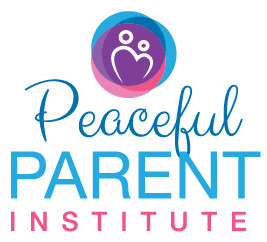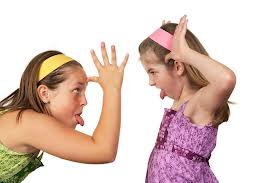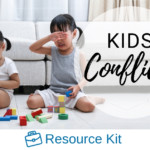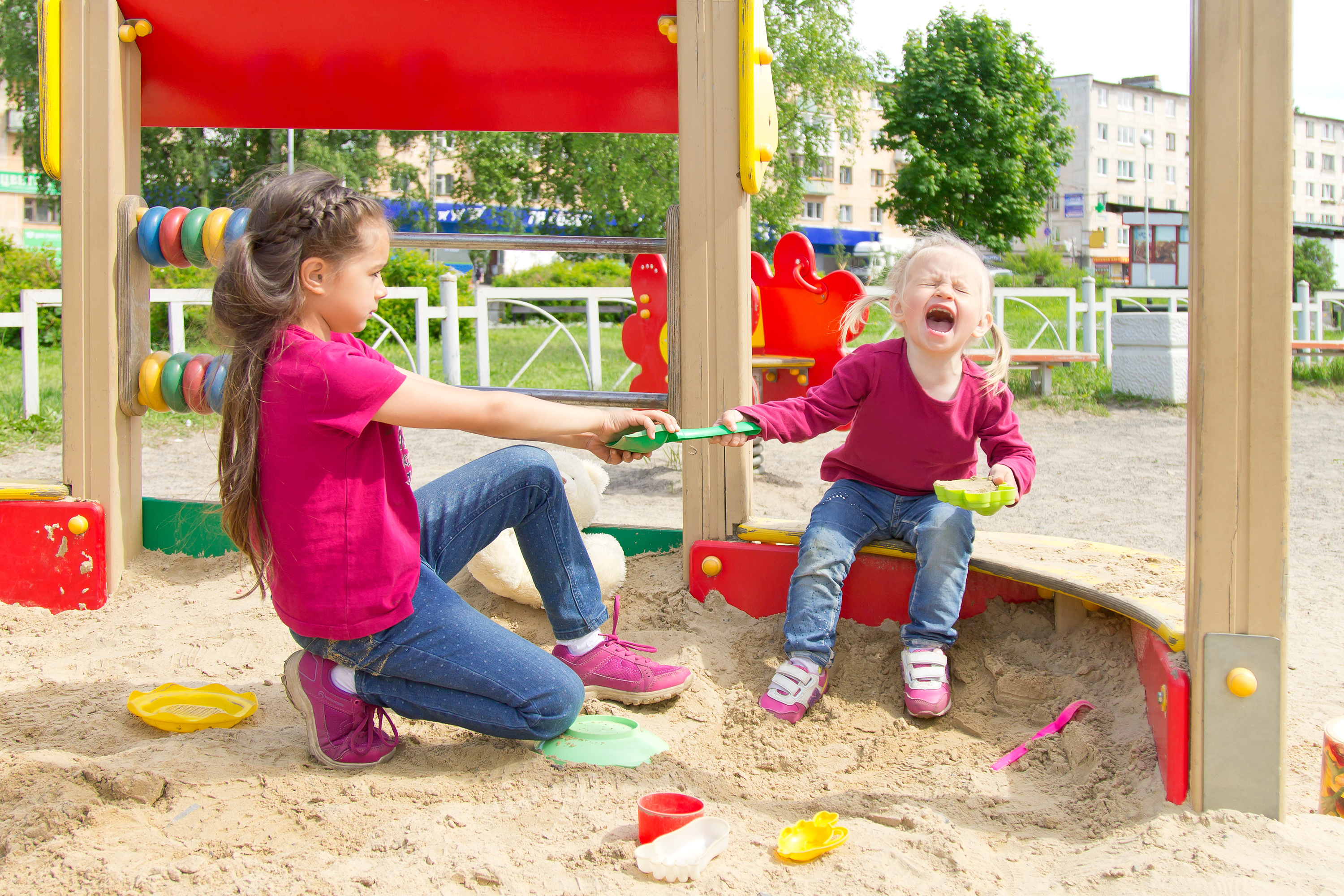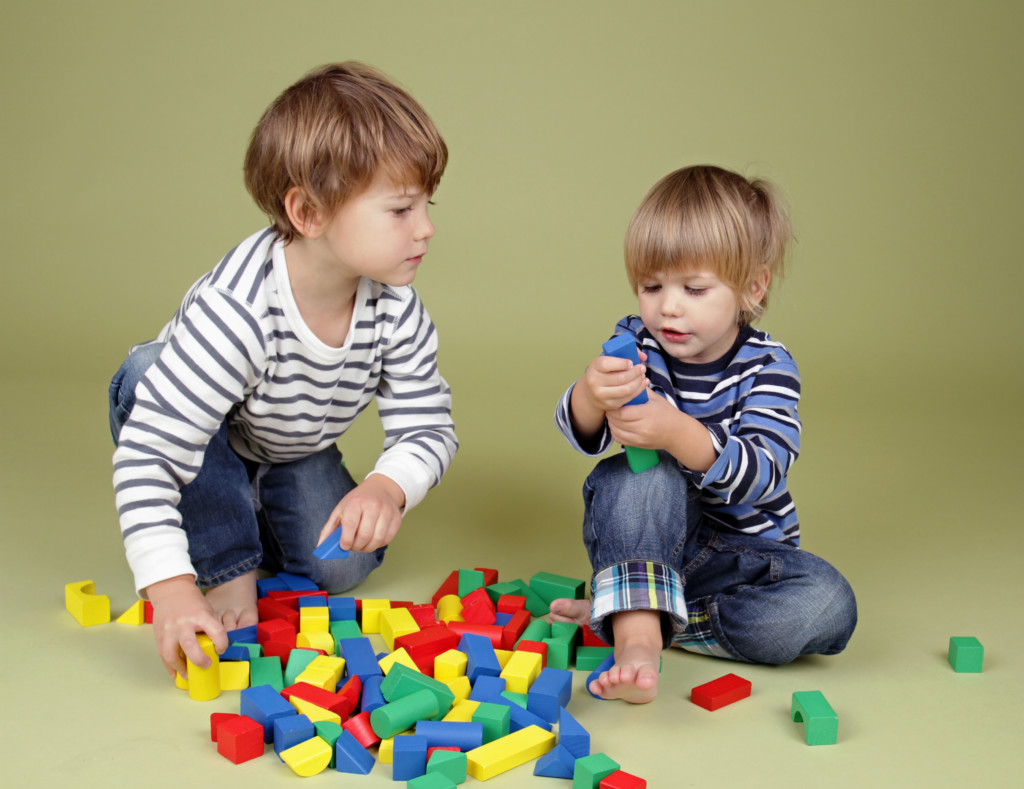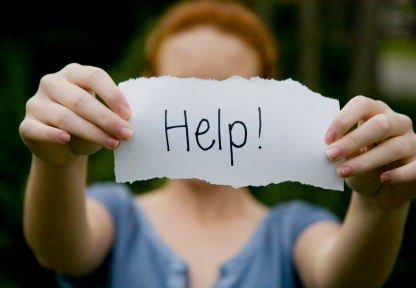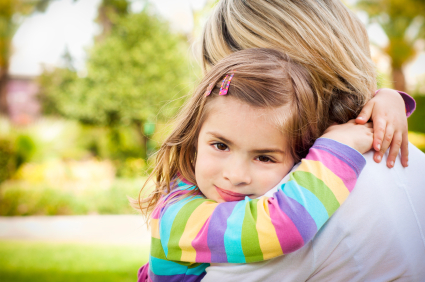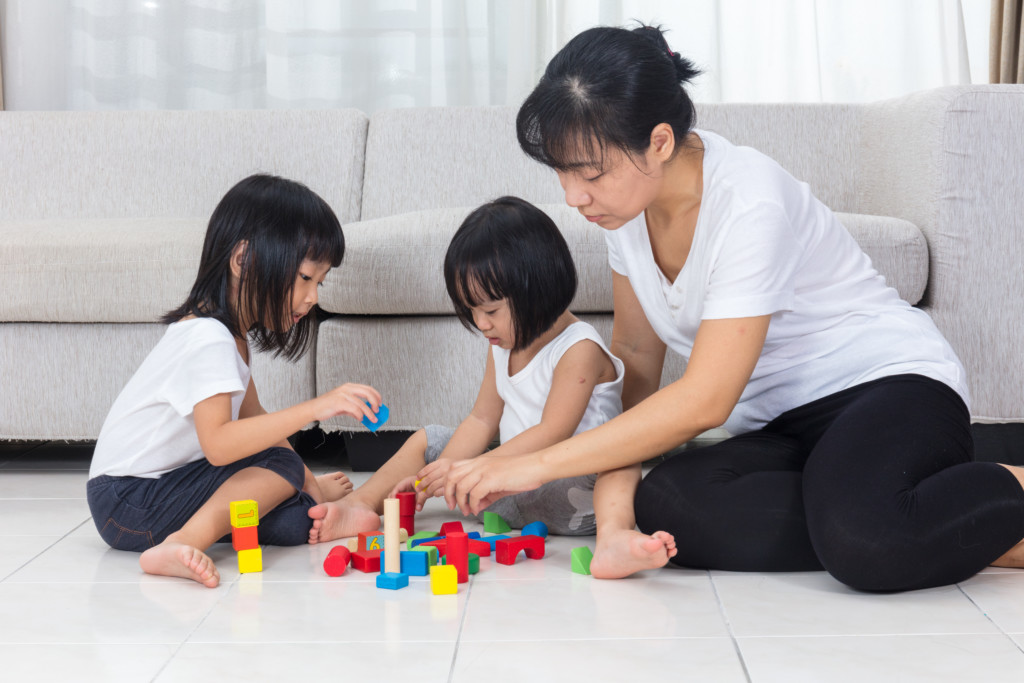By Genevieve Simperingham
When children argue, it really tests a parent’s patience to the max! Yet the more equipped you are to respond constructively, rather than that dreaded sense of powerlessness that parent so often feels, the easier it will be to maintain your cool as you help them through it. It greatly helps parents respond constructively when they remember to shift their perspective from viewing the kids to be making life unnecessarily difficult to instead seeing that they’re experiencing a problem that’s very real for them. Many of the daily challenges that children have in their interactions with each other are very big, very tricky, often stressful and definitely very real to them. Children much prefer to be having fun and need our patient support in helping them work through all these challenges!
When two kids argue, even when one or both of them are aggressive towards the other, they generally both feel frustrated. They can feel misunderstood, sometimes rejected and often overwhelmed, to name but a few emotions. They need the adult’s help to manage these emotions if they are to come back to being able to think and act well again. Additionally fearing their parent or teacher’s rejection, blame or, worse still, punishment can greatly increase their stress or distress. The more heightened their stress, the less able they are to be reasonable and take responsibility. We want to help them manage their stress and also learn and practice important communication skills.
When the adult intervenes in a way that reduces the stress for the children, this makes it much easier for them to work through these situations in ways that bring in problem-solving, clear reasoning and even consideration for the other.
What they most need is:
- help in developing the skills to manage those uncomfortable feelings that build up in their young bodies,
- the skills to express their feelings more appropriately,
- the listening skills to hear and acknowledge their sibling (or friend as the case may be)
- and support to brainstorm and solve their problems.
The problem-solving approach is a truly respectful and constructive approach
Problem solving helps arguing children by being an empathic mediator willing to support each child through their struggle rather than a referee who aims to evaluate. See your job to offer emotional support and guidance instead of needing to decide who’s in the right and who’s in the wrong and dictate a solution or “consequence”.
This approach gives children the direct experience of being treated with respect and empathy during conflicts, and it’s this experience more than any number of lectures on respect, that slowly but very surely teaches a child how to respond to siblings, friends and parents with greater respect and consideration during conflicts.
It’s ok that children disagree, don’t want to share, and feel big feelings
Every upset between children is a learning opportunity. When adults repeatedly enforce their judgments and solutions on children’s problems, children have less opportunities to figure it out and work it out. Adults solutions are often focused on just making the conflict stop, “don’t do that”, “stop fighting”, “give that back”, “let her play with you”, “if you don’t play nicely, you can go to your room”. Yet helping both children with their frustrations, underlying needs or confusion allows them to come out of the stress response and come back to being able to work through the situation more reasonably. It’s normal for children to not want to share (especially when they’re feeling frustrated and insecure) or to want what the other one has, it’s normal for preschoolers to go through phases of hitting, pushing and biting and it’s normal for children to be sensitive and get upset. It’s also normal for children to have preferences about who they want to play with and times when they don’t want to play with other children.
Instead of dictating or moralizing, we need to give them the space to express their thoughts and feelings, and in doing so we help them think about solutions.
If we want our children to be more considerate, we need to show lots of consideration of their feelings.
When we simply demand that the child does what they’re being told to do without question, rather than giving them the patient help they need to work it through, this is generally experienced by the child as their parent not caring about and not helping them with their big feelings. Which increases their stress, which leads to them being more reactive and less reasonable.
When we tell the child who doesn’t want to share that they should share, we ignore the feelings they have of being strongly attached to the item or perhaps their fears of giving it to the other child. When children pick up that their feelings are unacceptable to an adult, they can feel lonely, confused, blamed, guilty and perhaps even overwhelmed. Ironically, it’s often the adult’s lack of focus on accepting and sympathizing with the child’s feelings that can make it more difficult for children to develop empathy and social skills.
But as a parent adopts the attitude that every conflict between two children is a problem that the children are having that they need help with and that the squabble is not evidence that there is something wrong or bad about the child, then a parent can adopt a more caring and creative attitude in helping the children gain learning from the situation.
“Love accepts what is. Fear looks to blame because things are not going as they “should”. Love looks for solutions as it accepts what is. Fear looks for blame, love seeks solutions.” – Becky A. Bailey PhD
Our Kids Conflicts Resource Kit is a mini eCourse that’s just one of many resources for Village members related to helping families with tricky challenges around children fighting, being aggressive, mediating kid’s conflicts and sibling rivalry. Members can access specific support through our General Forum plus learn more through our eCourses and Resource kits with easy cheat sheet printables, videos and audios. Learn more about membership options.
Conflicts happen in most families on most days.
Working with parents, I hear lots of stories of children fighting from the minor to the more extreme. Typical examples are sharing “the live toy”; when two or more children don’t want another child to play with them; and when older children don’t want younger ones tagging along. Let’s explore a fairly typical example.
Angela has two children, four-year-old Bella and two-year-old Fin. Bella wants some of the blocks that Fin is playing with. Bella desperately wants those blocks to complete her little village, Angela intervenes telling Bella that she’ll have to wait until Fin is finished, at which point Bella’s frustration reaches overload to the point of a tantrum. Bella eventually calms down and offers Fin a deal of swapping toys. Fin happily swaps, both kids happy again … that is for about ten minutes until Bella needs more blocks, again offers to swap, but Fin refuses. Bella is in tears again and shouts out “you’re the meanest brother ever!” Now Fin dissolves into tears as well!
What doesn’t help?
It’s tempting to tell Bella; “don’t you speak like that about your brother!”, but this will most likely fuel her resentment towards him and add conflict to conflict, either in the present or in future interactions. Most children interpret this intervention as “you’re only caring about him” (sound familiar?). You could try and solve it for them “ok why don’t you take turns playing with the blocks and I’ll time you”, you could think of a clever bribe or threat to encourage your toddler to share, but is this what you want to model? Or encourage them to forgive and forget, “come on say sorry to your brother”, “share nicely with your sister”.
Any of these options may end the conflict in the short term, but they probably won’t help them resolve any frustrations that have built up. It won’t resolve the inevitable misunderstandings, and it won’t give them the opportunity to practice listening to each other, to own their problems or to practice solving problems together.
What does help?
One of the best ways of helping your child make their way back towards being calm and reasonable again is to express empathy; “hmm it looks like you’re really frustrated my girl, you really wanted those blocks didn’t you” Empathy heals and helps children feel acknowledged. To listen and reflect back what you hear shows that you’ve heard and understood their problem and invites them to share more. Receiving empathy naturally gives children the feeling of wanting to give empathy (when they’re not overloaded with their own big feelings, which demand more immediate attention).
You may think, “surely I shouldn’t encourage upset feelings”?
The more you support them to get it all off their chest, the quicker they’ll get through it. If they don’t get it out, they WILL act it out. Letting the bad feelings out frees children to feel good again. Children gain strength from our acceptance of their feelings. Empathy is mostly expressed through tone of voice, eye contact and body language like a caring hand on the shoulder.
Most of the time you don’t have to fix their problems, you only need to show that you really care. Our children love to gain their own insights and solutions when we give them the space and encouragement through our patient listening, reflecting back and validating their feelings and wishes.
If this approach is new, here are some guidelines that may help:
- Connect with both children with messages of support; “looks like you kids have a problem, can I help?” Intervening in this way can diffuse tensions from the beginning. It reassures each child that you’re not laying blame or taking sides, which you might have noticed, most children are very sensitive to!
- If one child is in danger, physically intervene if necessary, protecting by blocking one child from hurting, hitting, biting, perhaps putting your body between the two, holding or restraining but only if necessary while staying as neutral, calm and non-threatening as possible.
- When empathizing with the child who has been hurt, if possible keep the child who did the hurting close to you with messages of “I know you need me as well, will you stay with me while I care for ….. whose upset/hurt”, this invitation to be included, rather than rejection, is a lovely way of inviting, without pressurizing, the child who did the hurting to join in with expressing care and/or remorse.
- Express limits where necessary “I can’t let you say those words to your sister” or “can you please express what you feel to your sister without using attacking language” (adapting the language to the child’s age and vocabulary). You can help by reframing “I can’t let you call your brother names, but you can tell him how upset/ angry/ frustrated / annoyed you feel”
- If one or both children are particularly upset, just listen and let them get it all out until they’re ready to seek a solution, if the problem still exists at that point. Reasoning escalates upsets when a child is emotionally charged.
- Facilitate them taking turns to give their side of the story and hearing each other. With pre-verbal children, you can express in words what you interpret they’re expressing, “John it looks like you pushed Maria because you didn’t want to share the truck, is that right?”
- Reflect what you hear, re-framing where necessary. “I hate him, he NEVER shares, he’s mean!”; “you’re really upset because you really want those blocks.”
- Encourage them to contribute ideas to solve the problem, then respect and restate all ideas as non-judgmentally as possible; “Bella you want Fin to swap blocks for cars and Fin you’re suggesting Bella go outside and play, hmm this is a tricky one. I reckon you kids can work it out. Are there some ideas you haven’t thought of?” Children who were unwilling to discuss options previously are often enabled to do so with the adult’s support.
- Help them decide which idea they prefer if any; and help them carry it out.
- Reinforce the process when the problem is solved. “You both shared your feelings and ideas, you listened to each other, you found a solution. You kids worked together to listen to each other and seek a solution to your problem.”
When no solution can be found.
For Bella and Fin, it reached the point where there wasn’t an easy solution – they were both upset. It’s hard for child and parent, but it’s understandable and they need to be allowed to be upset. Trust that your soothing messages are being received despite continued cries. Nice messages can be; “I’ll be with you while you wait Bella”, “Fin you’re upset that your sister is angry with you”, “I’m looking after you both and caring for all your feelings – what a good cry, you’re getting it all out”. Try to avoid rushing them out of their feelings, the more you resist, the more their hurt feelings will persist.
In such instances, the girl or boy may need to express a backlog of feelings that have caused them to be generally out of balance, the conflict may be just a catalyst, what they need is for mum or dad to share the moment with them and be their loving empathic rock of strength as they get it all out.
With the right kind of intervention, we can support children to develop the skills and the confidence to be constructive problem-solvers for life!
A great resource for parents who wish to develop their patience and decrease their stress while exploring and resolving some of their childhood triggers is Genevieve’s Stress Relief for Parents CD. It equips parents with self-regulation skills that they can then share with their children.
If you need support in your journey of adopting peaceful parenting strategies in your family, contact Genevieve about some one on one parent coaching or counselling or both combined.
You might also like to read:
What childhood hurts do issues with your children evoke in you?
Children need Emotional Safetyand Ways that we Shut our Children Down
Can you maintain healthy boundaries? Are you modelling healthy boundaries? What about all this anger? How can I become less impatient and more patient?
You might also like to read “Go away! What to do when your child won’t LET you connect” In this one, I discuss some of the issues and potential approaches to take when your child rejects your help, connection or empathy.Recommended reading:
Siblings without Rivalry By Adele Faber, Elaine Mazlish
Parent Effectiveness Training by Thomas Gordon
Guiding Young Children by Eleanor Reynolds
Click here to Subscribe to receive other articles and updates.
Genevieve Simperingham is a Psychosynthesis Counsellor, a Parenting Instructor and coach, public speaker, human rights advocate, writer and the founder of The Peaceful Parent Institute. Check out her articles, Peaceful Parenting eCourses, forums and one-year Peaceful Parenting Instructor Training through this website or join over 90,000 followers on her Facebook page The Way of the Peaceful Parent.
